St. George’s Church
PeriBlog XX: Burqin, Palestine
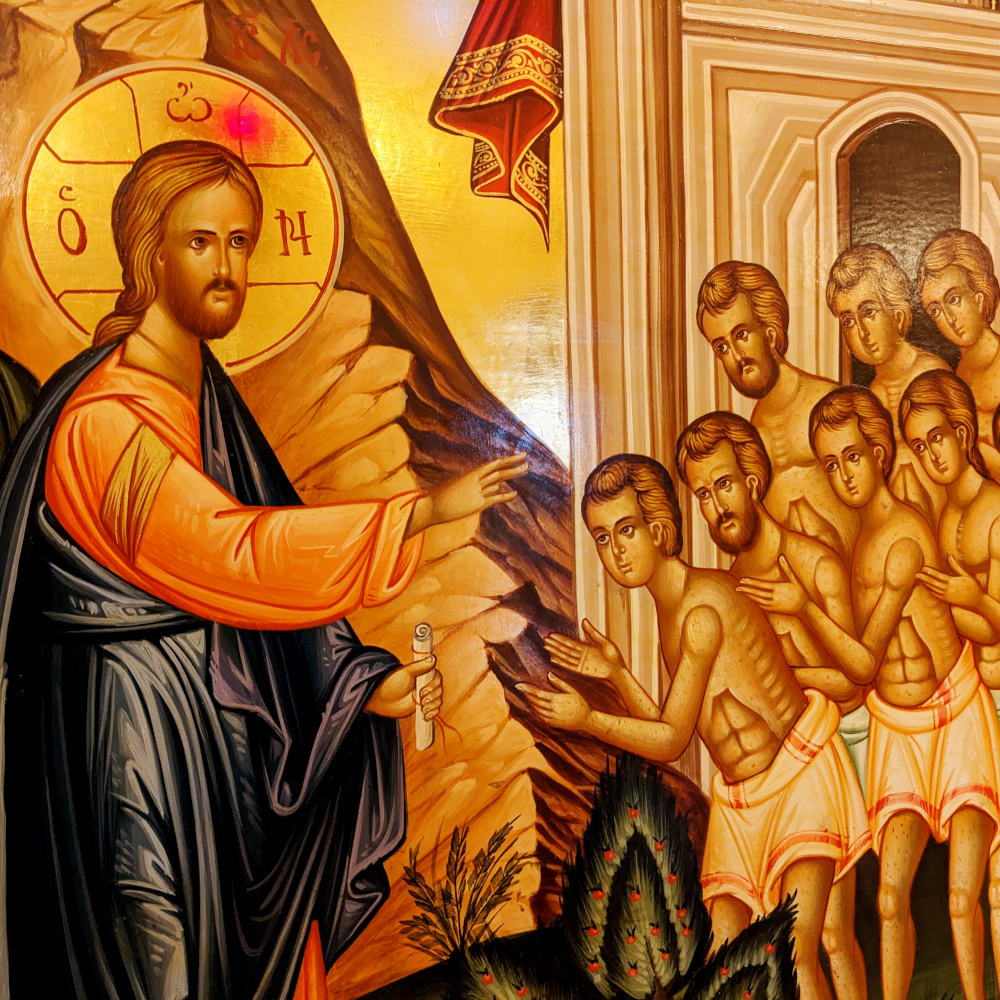
Jesus heals the Ten Lepers
Burqin is a small village planted in the rich alluvial farmland of northern Palestine. Approximately four kilometers southwest of Jenin, the older part of the town is a maze of winding, car-blocking, stone-slabbed alleys.
Built into the side of a south-facing prominence, the Greek Orthodox Church of Saint George stands as a monument to the earliest days of the faith. According to the guidebooks, tourist literature, and the keepers of the tabernacle, this elegant little edifice is the fourth oldest church in Christendom and the site of a famous miracle, Jesus’ healing of the ten lepers.
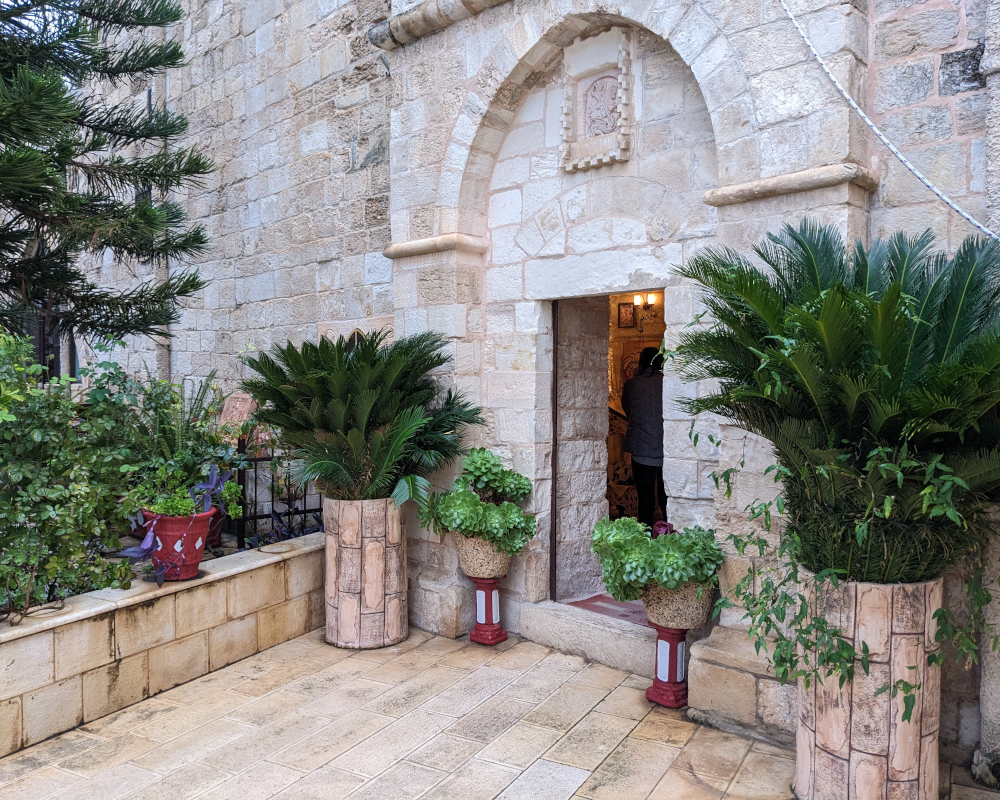
The Church of Saint George, Burqin, Palestine
But is any of this true?
The healing of the ten lepers
The evangelist Luke provides the literary seed of the Burqin tradition. At Luke 17:11-19, the writer states Jesus was heading south, on his way to Jerusalem. Upon entering a small village, he encountered a band of ten lepers. Although treatable today, leprosy was a terrible illness in the ancient world. The lepers begged for Christ’s intercession. He agreed to help. He ordered the men to go and present themselves to the temple priests
On their way to fulfill this command, the miracle kicked in and the lepers were healed. One of the men—and Luke emphasizes that this man was a Samaritan—turned back, found Christ, fell upon his knees, and thanked him for the gift of healing. The story ends with Jesus wondering what happened to the nine Jews—why had only the Samaritan returned? The Samaritans, it should be noted, were a sect that had broken with Judaism. They were considered outcasts and held in contempt for their unorthodox beliefs.
Jesus then blessed the man and sent him on his way.
Here ends the biblical account.
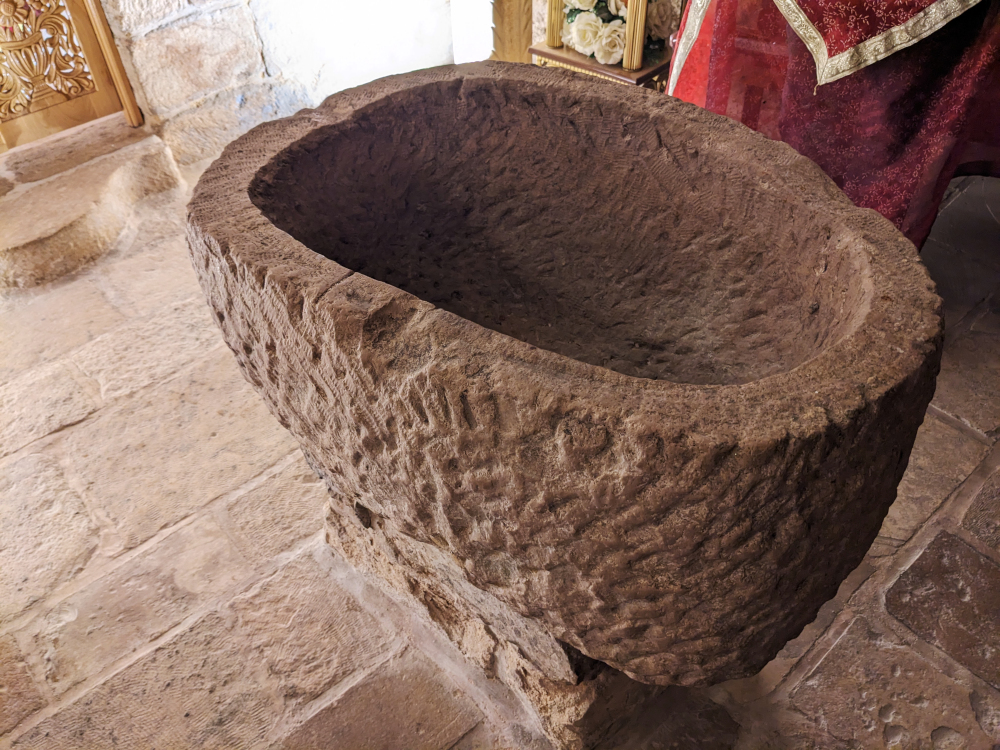
Stone baptismal font, Burqin
Tradition picks up the slack
So where was this village, located in the region between Samaria and Galilee? According to local traditions, it was Burqin. The village lies near the border between Galilee and Samaria. Mount Gerizim, the holy mountain upon which the Samaritans built a temple to compete with Jerusalem, stands seventeen miles south. It would not be surprising to find a Samaritan leper in this village.
The identification of the village with the miraculous healing received an official imprimatur. Imperial archaeologist Saint Helena—Constantine’s mother—is said to have confirmed that this was the place of the miracle.
Helena was very busy.
A visit to the church
We reached the church on a rainy December afternoon. The two guidebooks I consulted claimed that the church was open daily for visits.
Guidebooks are often wrong.
When we arrived at the church, a stout wooden door denied entry. The door was locked. I worked the large, iron ring door knocker, pounding vigorously for attention.
No luck.
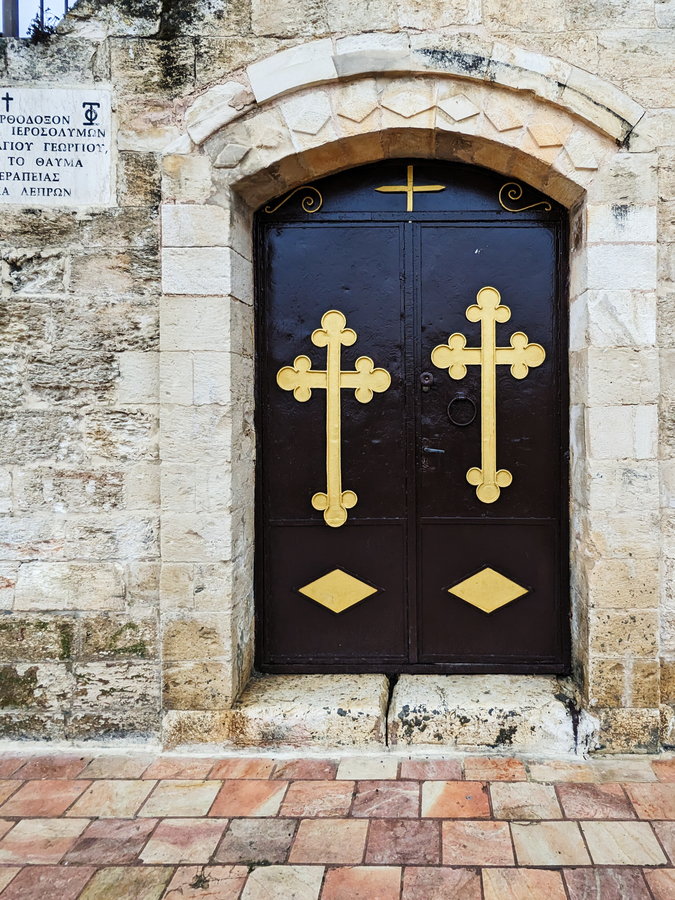
You shall not pass
With tears in our eyes, we climbed back into our chartered taxi. Fortunately we had a resourceful driver. He zipped around town until he found someone who knew a man with a key. Five minutes later we were back in front of the door, watching the church warden open the door.
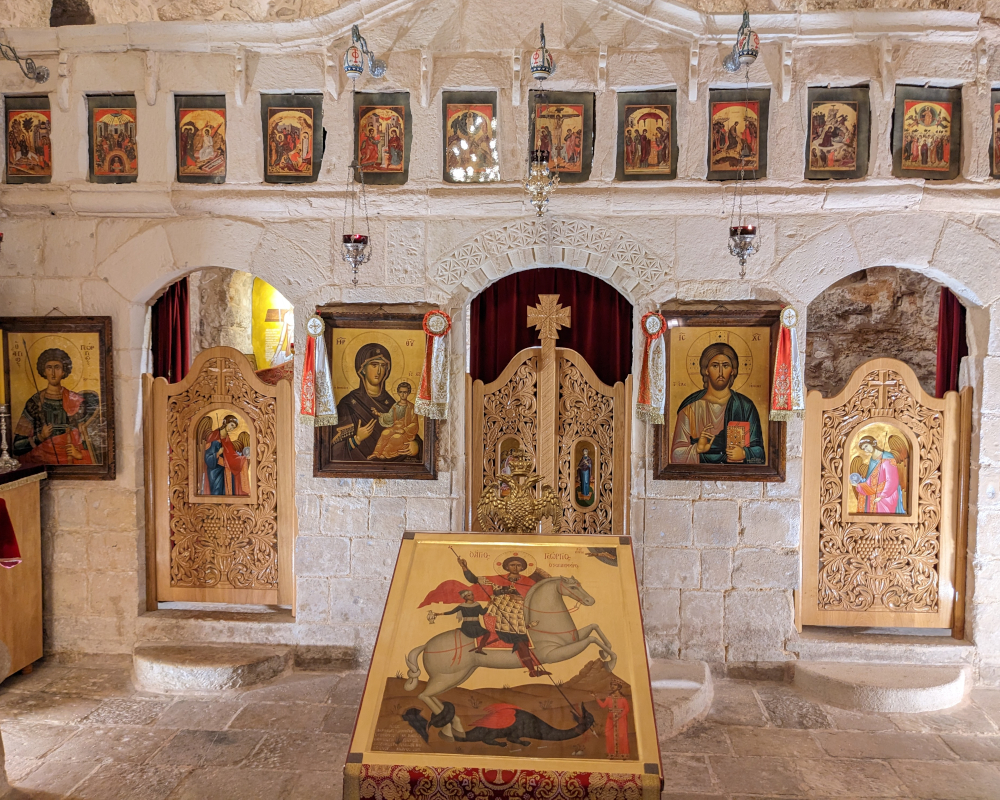
Iconostasis, Church of Saint George
After Helena gave this site her official endorsement, claimed our guide, a church was built here. That meant that the church was the fourth oldest church in the world. He led us to a hollowed-out area at the back of the church that resembled half a cistern. “At the time of Jesus, this was a cave. The lepers lived here and the people lowered food to them through that opening.” He pointed to a vertical shaft cut into the stone at the top of the cavern. “The lepers lived here because they had to stay away from the rest of the people. When Jesus came, he heard them calling and healed them.”
Call me a skeptic.
As noted above, this space appeared to be half a cistern—a place where the village would store water, not lepers. Rather than lowering food, the villagers probably raised buckets of water. It seems like an unlikely place for the lepers to live. Moreover, Luke states that Jesus encountered the lepers in a village street, rather than sequestered in a cave.
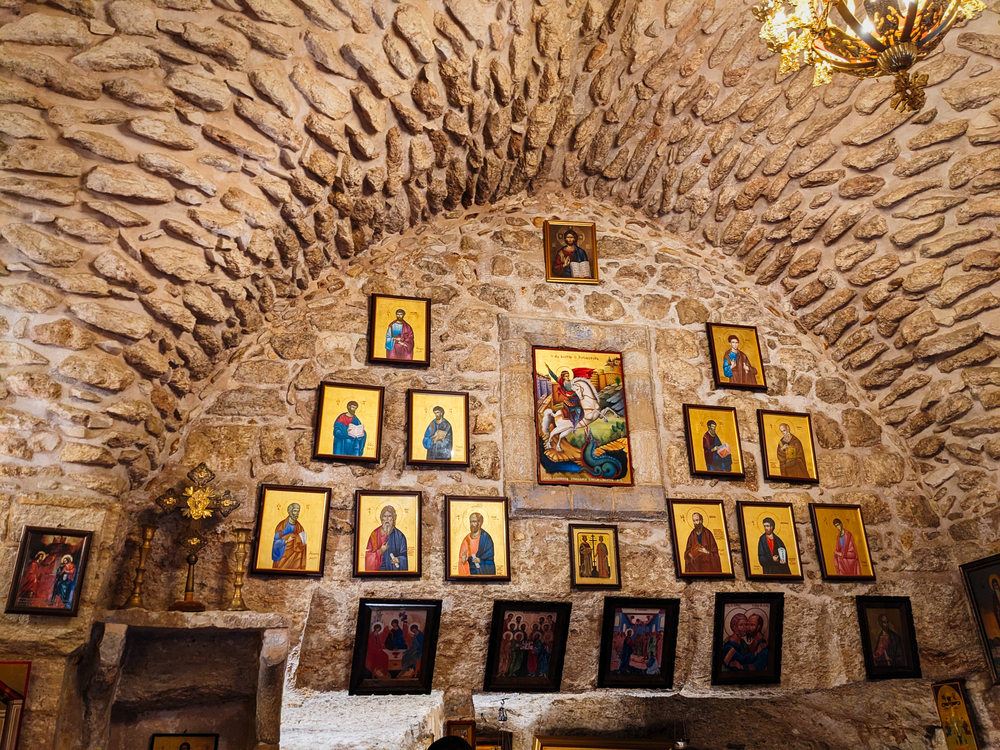
Icons line the wall above the leper’s cave
Helena’s identification of the site is also problematic. Eusebius’ Life of Constantine is our oldest literary source for the tales of Helena’s archaeological explorations in the holy land. Although Eusebius does suggest that the Empress built churches in Jerusalem and Bethlehem linked to key events in Christ’s life, the historian—a contemporary of Constantine and Helena—does not mention any churches founded north of Jerusalem.
I think the church is very old, but I doubt that it was established by Helena or is the fourth oldest church in the world.
Despite my reservations, it is a beautiful place. Gold icons cluster on the stone walls and the stones bear the weight of ancient prayers. Burqin once was a Christian city, but the balance has tipped to Islam. Today only 68 village Christians worship in this church.
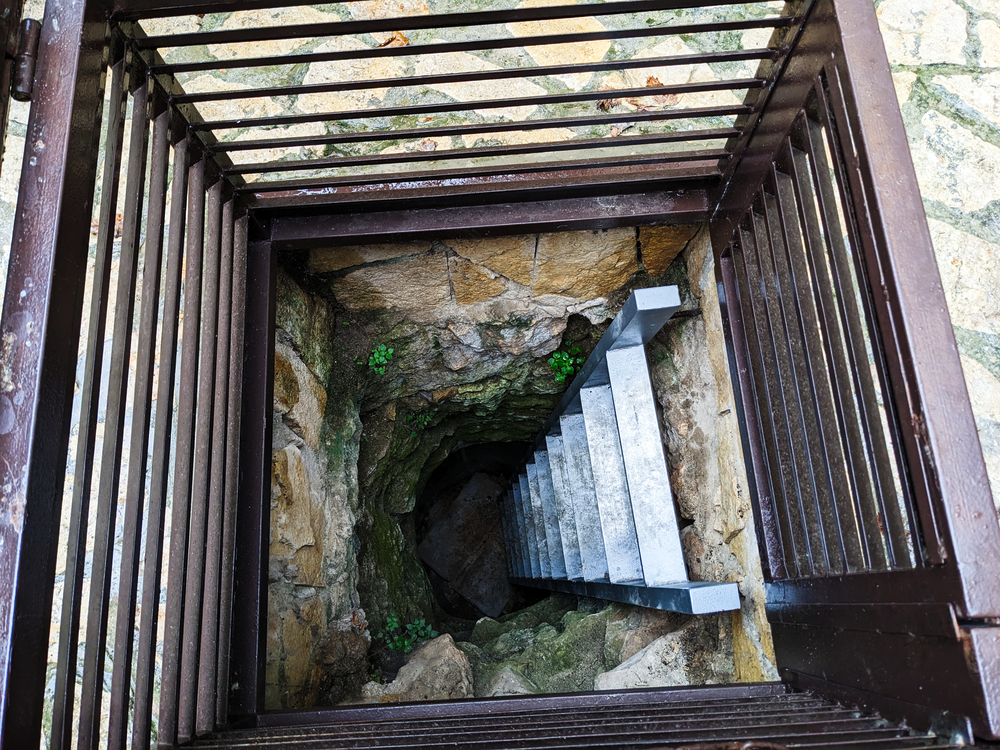
Possible Christian hiding spot
After a ritual cup of coffee, our guide showed us the opening to a shaft that descends to caves beneath the church. This was, he said, the place where village Christians once hid from Roman persecutors. Around the corner was another small stone room filled with books. A placard, written in English, related another famous miracle connected with the church.
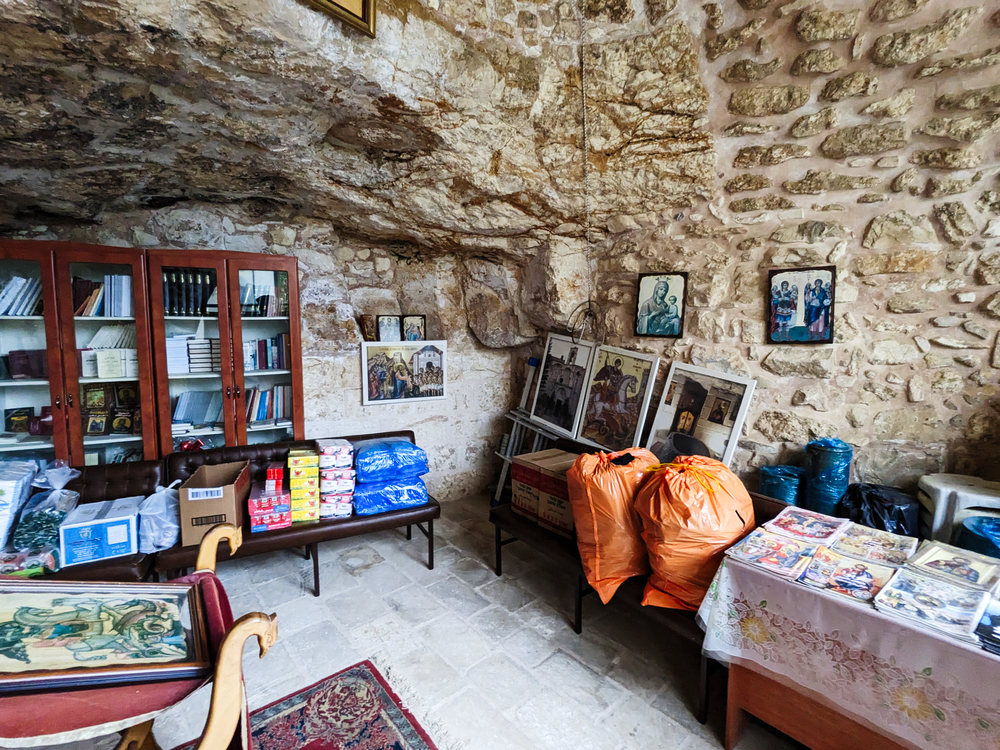
School of miracles
According to the legend, the room in which we stood once served as a schoolroom. One day, a particularly naughty young lad spit upon his teacher and cursed him. The school master locked the boy in this room and then took the rest of the students into the village for a pleasant excursion.
While the boy fumed in the cell, Saint George appeared to him. The saint chastised the malcontent for his wicked ways and pronounced a sentence: the boy would not be allowed to speak again until he apologized to his teacher.
When the class returned from its field trip, they discovered the boy had lost the use of his tongue. The repentant young man wrote an account of what had happened to him, and offered an apology to his teacher. As soon as his stylus scratched the word “sorry,” his tongue loosened and he recovered his ability to speak.
St. George performed this miracle “in Burkin City from long time ago,” concluded the placard.
Which, I suppose, makes St. George the patron saint of harassed schoolteachers.
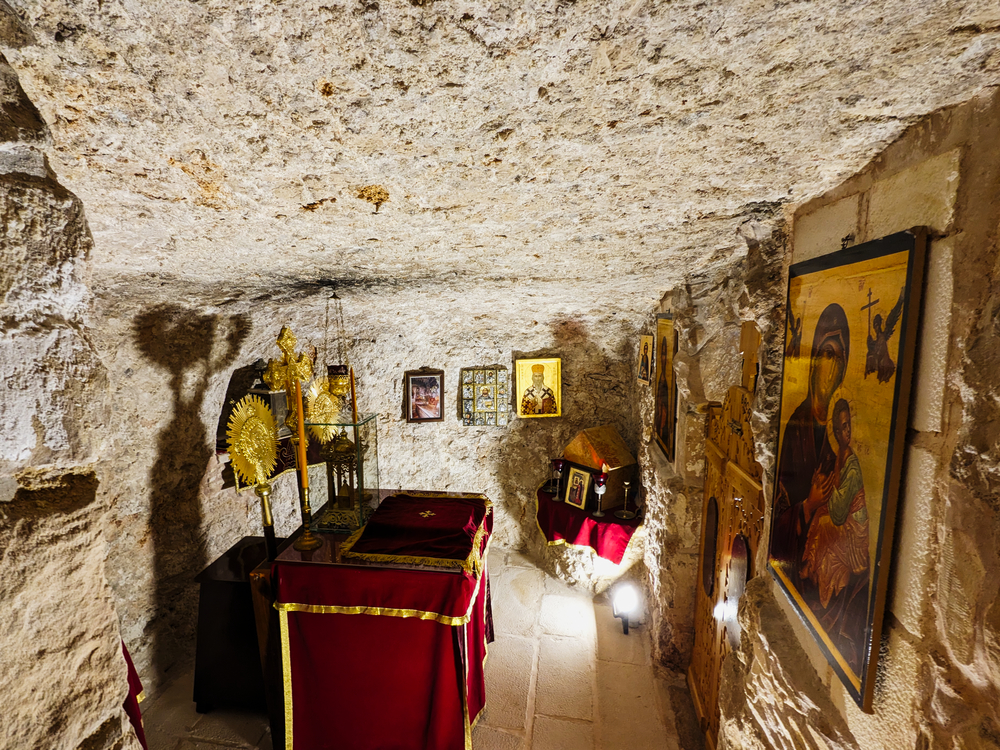
Church of Saint George, Burqin
The Church of Saint George is a jewel of a church and the village of Burqin would probably reward further exploration. This could be the site where Jesus healed the ten lepers, but I would be happier endorsing that opinion if it rested on something stronger than local tradition.
If you are enjoying this series, why not subscribe to Richard's monthly newsletter, What's New in Old News? The Peripatetic Historian is on the road, roaming the world and compiling fresh adventures. Don't miss out. Click here to join the legions of above-average readers who have already subscribed.